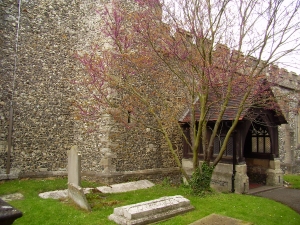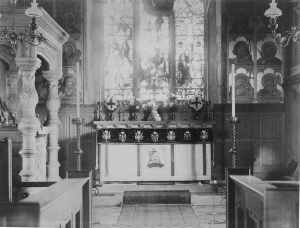St Giles’ History
St Giles’: A brief history
South Mymms is a very ancient place at the divergence of the roads north from Barnet to Hatfield and St Albans. It has, for centuries, been situated on major routes, and the nearby Motorway Service Station is only a contemporary version of the 22 inns that the village used to boast.
Until the early nineteenth century South Mymms (commonly called “Mimms” today, but the church affects one of about twenty ancient spellings) covered the whole of Potters Bar, the northern part of Barnet and the western edge of Enfield. The most recent of the Potters Bar churches, King Charles the Martyr, was a daughter church of St Giles, founded in 1947, but today St Giles is separate from all the Potters Bar churches (while maintaining good links and relationships).
Historically the St Giles vestry meetings took place in the White Hart close by. More recently the Black Horse, also in South Mymms, has become the site for a Good Friday sermon delivered from behind the bar, and has also hosted dinners for the choir and bell ringers (who come from both churches). Today the population is some 1700, 1200 of whom live in the village itself, as opposed to the outlying farms and other institutions
St Giles was built between the 12th and early 16th centuries. A church is first mentioned in 1136, and in 1154 it was dedicated to St Giles. It formed part of the diocese of London until 1979; shortly after becoming part of the St Albans diocese the benefice was united with that of St Margaret’s, Ridge.
By the 19th century it was in poor repair, and retained plaster ceilings, box pews, a three decker pulpit and a gallery. In 1852 the first Tractarian vicar was appointed, and he engaged G E Street to plan renovations. These were eventually carried out in 1877. In the early 20th century a font cover and chapel window by Ninian Comper completed the church that we see today. It has a number of rare treasures, including pre-Reformation stained glass (families of young men and maidens), two brass chandeliers restored in 2000, and two splendid tombs from the late 15th and early 16th centuries together with a wooden screen around the Lady Chapel. The church was recently re-roofed and maintained (c.2000), and is generally in good repair. A number of legacies and trusts exist to help with flowers and fabric.
Chancel in 1865


